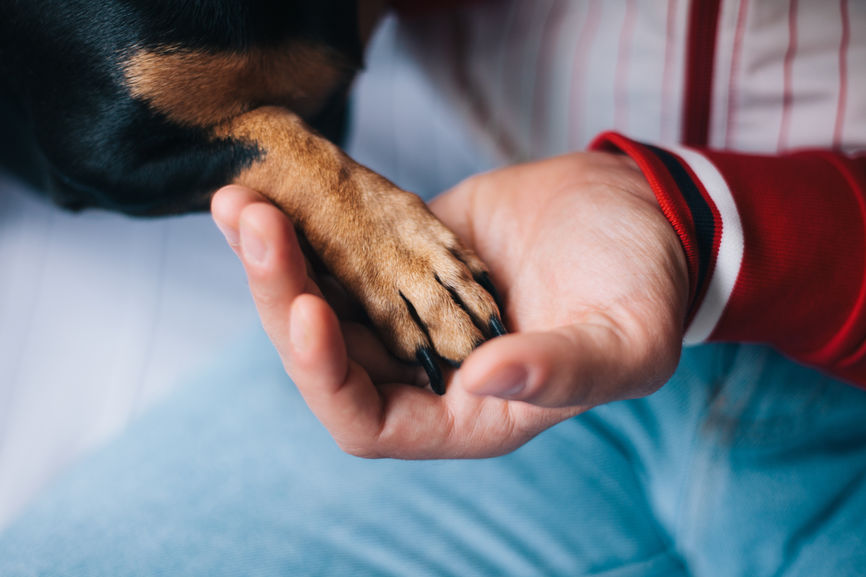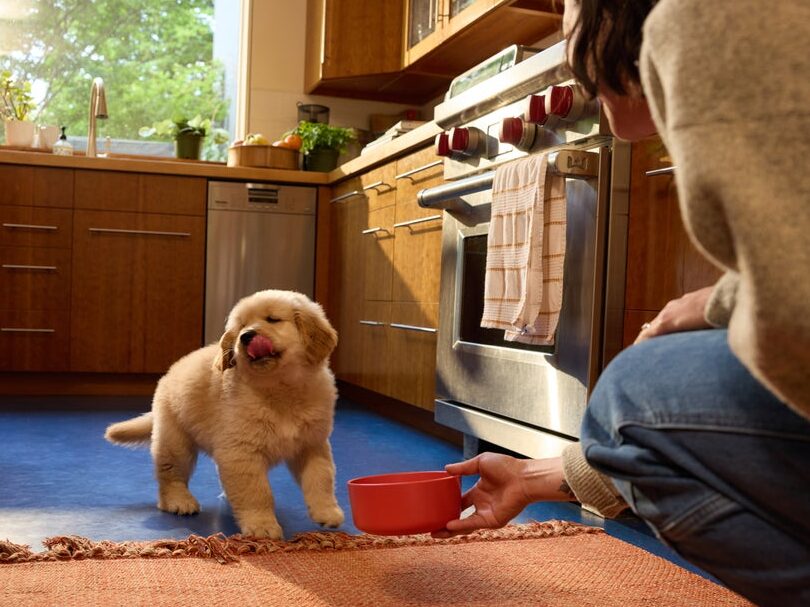Hey Ollie blog readers! We’re offering you an exclusive 60% OFF your starter box! Try now!
It’s one of the first things that we learn about ourselves in nursery school: which hand we prefer to use drawing with crayons and throwing a ball. For humans, it’s been proven that hand dominance can say a decent amount about you: In fact, research shows that there are very real physiological and neurological difference between right, left, and ambidextrously-handed people. So, as a pup parent, you’re naturally wondering… ‘Does the same “left and right-pawed” data apply to our doggos?’ And how do you tell which paw they use more often? We did some backyard-style digging to get to the bottom of it:
What the scientists are saying
Dog parents aren’t the only ones who have been curious about whether pups can be a “righty” or “lefty.” It’s a topic that scientists have long debated, conducting tests and studies to reach a consensus: indeed, dogs can have a dominant paw.
One of the tests often cited is the “Kong Test,” a method that determines a dog’s “lateralization” (a fancy way of referring to their tendency to favor one paw over another). Here’s how it works: Scientists give the dog a Kong toy filled with food. Then, they observe the dog’s behavior over the course of an hour, noting when the left and right paws are used to hold the toy down, as well as when both paws are used together. Many researchers have used this test in their own related studies, often concluding that dogs have an equal preference for right, left, and both paws.
Another popular test is the First-Stepping Test, which some scientists prefer to the Kong Test because it eliminates the hunger variable. In this test, dogs are observed for a total of 20 minutes while scientists record which paw they use to step forward 50 times. This study “revealed more significant paw preferences than the Kong Test,” with more dogs testing as right-pawed.
What it could mean about our pups
We know that right and left-handedness can give us insight into the way human brains organize thoughts and emotion. So, could the same be true of our pups and their paw dominance? Some scientists argue that the answer is yes.
In 2013, researchers at Australia’s University of Adelaide conducted a study to determine if a correlation exists between a dog’s dominant paw and their emotional responses. In the study, they used the Kong Test on 73 dogs to determine whether each was right or left-dominant. In their sample group, they determined that 34% of dogs were left-pawed, 29% were right-pawed, and 37% had no preference.
From there, they studied emotional patterns of the dogs using the Canine Behavioral Assessment and Research Questionnaire. The assessment is widely used and accepted in the veterinary community, as a means of measuring a dog’s aggression, fearfulness, sociability, excitability, and their response to training.
Dr. Stanley Coren, a psychology professor at the University of British Columbia and author of several books about dogs, reported these findings in Psychology Today:
“While the data did not show major differences between left and right pawed dogs across a broad spectrum of emotional behaviors, some interesting results emerged when it comes to aggressive responses that dogs are apt to make toward unfamiliar people. Here it seems that the left pawed dogs were more likely to show such aggression.”
Dr. Luke Schneider, who led the study, said he found “a statistically significant relationship between stranger-directed aggression and the presence of a paw preference” and that “dogs without a paw preference demonstrated lower aggression scores.”
Oddly enough, this conclusion is consistent with research on left-handed humans, which indicates a greater tendency to react with negative emotions and aggressive behaviors, versus those who are right-hand dominant.
Putting it into pup-spective
Before you start panicking about your pup’s frequent use of their left paw, remember that this is just one study, and there’s still much room for additional research. There are also countless other factors that can affect a dog’s personality. What’s most important to note is that the day-to-day behaviors of our dogs can give us insight into their personalities and preferences. That, and you’re not totally crazy for speaking to your pup like a human baby— it turns out, they might be more a lot more like us than they let on.
Content provided by Healthy Paws Pet Insurance. Healthy Paws is one of the leading pet insurance program providers in the U.S. for dogs and cats, and is ranked #1 by customers on leading review websites. Click here to get up to 10% off Healthy Paws Pet Insurance!
(Policies are underwritten and issued by ACE American Insurance Company, Indemnity Insurance Company of North America, ACE Property & Casualty Insurance Company, Atlantic Employers Insurance Company, members of the Chubb Group.)
The Ollie blog is devoted to helping pet parents lead healthier lives with their pups. If you want to learn more about our fresh, human-grade food, check out MyOllie.com.
Tagged As:

The nutrition your dog needs,
the food they want.

Enjoying our articles? Subscribe our Newsletters and get new articles directly to your inbox
You might also like
13 May 2025
8 MINS READ
Puppy Training Guide & Behavior Timeline
Bringing home a puppy is pure magic. It’s also pure chaos—tiny teeth, zoomies, accidents in the house, and moments that make you wonder if you’re raising a future genius or a tiny tornado. …
by Ollie Pets
10 May 2025
12 MINS READ
New Puppy Checklist: Guide To Prepare For A New Dog
Bringing home a new puppy? This checklist covers everything new dog owners need—from essential supplies to training, feeding, and first vet visits.
by Ollie Pets
3 April 2025
9 MINS READ
Home Remedies for Fleas on Dogs: 10 Natural Ways That Actually Work
Wondering what kills fleas on dogs instantly and naturally? If your pup is scratching like crazy, it may be time to take action. In this guide, we’ll show you the most effective home remedies for…







